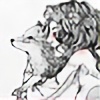HOME | DD
 Tajii-chan — Party Planner
Tajii-chan — Party Planner

Published: 2012-07-12 17:20:46 +0000 UTC; Views: 3063; Favourites: 268; Downloads: 45
Redirect to original
Description
"Hair can say a lot about a person, you know?"




One of my favorite characters to draw, Maria: Goddess of Love and.. halftime party planner




 This woman literally appears in more than half of my novels, given that she's the eldest goddess in Haura. Despite the fact that she's over thousands of years old, she refuses to hide herself away, even though she's immortal. And so she's often been dubbed "The Master Illusionist" because she can wear so many disguises. She changes them quite often because of her immortality... And not just hair styles! Oh no, she can really use illusions quite well..
This woman literally appears in more than half of my novels, given that she's the eldest goddess in Haura. Despite the fact that she's over thousands of years old, she refuses to hide herself away, even though she's immortal. And so she's often been dubbed "The Master Illusionist" because she can wear so many disguises. She changes them quite often because of her immortality... And not just hair styles! Oh no, she can really use illusions quite well..So really. If you go to her to plan your birthday and order a cake...? It really is a lie





Related content
Comments: 110

Aww, you're too kind ;u; Thank you so much!
👍: 0 ⏩: 1

Heh no problem i just have to show gratitude
👍: 0 ⏩: 0

Thank you! 
Sorry for such a late reply!! D:
👍: 0 ⏩: 0

Thank you! I have so much fun with her hair *__*
👍: 0 ⏩: 0

Thank you! 
👍: 0 ⏩: 1

I love the colours on this! Very eye-catching.
👍: 0 ⏩: 1

Thanks! 
👍: 0 ⏩: 0

Multicolored hair! 
👍: 0 ⏩: 1

Yes, I love it!
Thank you! 
👍: 0 ⏩: 1

Whenever I want to update my colored pencil skills and try to take my skills to a higher level I just go through your gallery to study your tegnique 
I thought it would be nice to let you know this
👍: 0 ⏩: 1

Wow, really? ;//; That means a lot to me
If there's ever any advice I can give you, I'd be more than happy to! 
And thank you!
👍: 0 ⏩: 1

Well, maybe there is something
You're skilled with coloured pencils and thats also my trade so maybe you can help me out
When shading skin, I always use orange-pink-ish pencil for the base of the skin and darker tones for shading. But sometimes you wanna play with light a little to make it darker or lighter so what can I do to change that a little? For example, when it's dark, you don't colour the whole skin totally orange. I already tried to do some blue and purple colours but it ended up drawing a corpse 
When you take a look into my gallery you'll see that my coloring is pretty much the same in every drawing. Bright and vibrant colours but no real lightsource and actual shading. I've been looking for tutorials but I haven't found anything really helpfull yet, and I really wanna take my colouring skills to a higher level.
You think you can help me out?
👍: 0 ⏩: 1

I'd be happy to help!
1) You actually have the right idea, here 

As far as using blues and purples, those are actually a fitting contrast for skin tones. They are however, very difficult to blend in. The last time I shaded with blue was here: [link] I usually use it as a fade out effect, so it's a bit darker. I also only use blues in areas that really need to be defined. So basically I use it to very very lightly make things stand out. Maybe hair, underneath the chin, etc. If you're using a lot of one color in a drawing, it's also nice to see a bit of that color into the skin as well.. but only if you can pull it off 
As far as lightsource, I haven't even looked for any real tutorials myself. I learned a few things in art class though. What I always do is draw my light source on the paper-- at least to start with. Is it coming from the left, the right? Upwards? Downwards? Depending on where it's coming from, there will be more shadows on one side of the drawing. For instance, if the light source is on the left, then the light will be hitting the character's face from the left. The cheek there will be lighter, while the shadow cast from the nose will on the right side.. The best way to understand light source is to basically just look at the light around you 
👍: 0 ⏩: 1

Woooww you just gave me the largest comment I've ever got
Thank you for helping me out 


👍: 0 ⏩: 1


And no prob! I really hope it helps you out
👍: 0 ⏩: 0

I LOVE THIS ONE!
Her hair is so gorgeous ;A; ♥
And the way it swooshes
👍: 0 ⏩: 1

Thank you so much!
I really, really enjoyed drawing her hair
👍: 0 ⏩: 0

Pfff, she's a party planner? xD That is awesome!
I still love her hair xD
👍: 0 ⏩: 1

LOL Part time party planner 
Thanks!
👍: 0 ⏩: 1

And what an aweosme one! XD
You're welcome
👍: 0 ⏩: 0

pretttyyy!! ^ - ^ i luv pink and blue hair! 
👍: 0 ⏩: 1

Thank you! 
I have no idea who that is, but ah well
👍: 0 ⏩: 1

haha never mind!
👍: 0 ⏩: 0
| Next =>



































